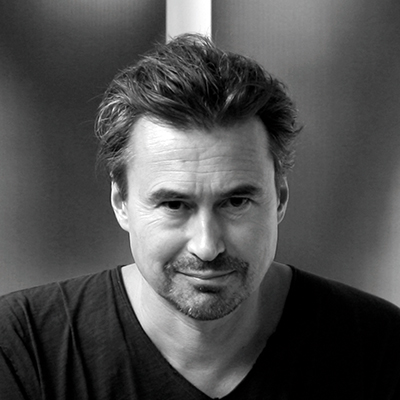Post-Digital Surface (T12)
Artist:Pascal Dombis
Year:2022
Size:120 x 180cm
Media:Lenticular print on aluminum composite
Pascal Dombis早期以繪畫進⾏創作,偶然機緣接觸了數位印刷形式,在複雜的創作歷程中,他想做的是「擁有控制權」。多年來他⼀直使⽤電腦與演算法來⽣成簡單複製幾何與印刷符號,創造不可預測的動態視覺圖形,他使⽤「分形演算法」(fractal algorithm)透過參數的設定,從幾何、有機、物種、細胞或各種城市規劃之間的演算模擬,創造新的表現⼿法,他花費數年時間將這種新的創作形式轉化成合適的當代作品表現。看似隨機的顏⾊組合,其實是透過演算法製作的曲線,從不同⾓度觀看,便產⽣不同效果。Post-Digital Surface系列作品,觀者可感受到⾊彩與光線交織的動態,無⽌盡的重複聚合與離散的光線運動,簡單純粹的形式與視覺產⽣的錯覺,融合為⼀。
Artist
Pascal Dombis
(Frence, b. 1965)
Graduated from Tufts University computer art and Insa University in Lyon, France. Digital artist Pascal Dombis currently lives and works in Paris. His focus involves the exploration of language, noise, control, and irrationality. Dombis has been using computers and algorithms to generate and elaborate repetitions of simple processes, which computationally reproduce geometric or typographical signs. Started as a painter, Dombis notes that his encounter with William Burroughs’s art was a key moment for his new investigations into digital art. Dombis uses optical materials such as lenticular plates to revisit the way viewers look at things, and to question the very nature of images in the broad sense of the word. By using lenticular, allows him to play with the viewer’s gaze. The incessant circulation of images has made the way of looking at things more dynamic. Moreover, the lenticular material questions this new reading paradigm and brings about a physical and time-related experience. Over the years he created monumental public works for the City of Perth, Australia, the Ministry of Culture in France, and an 8 meter long outdoor sculpture installation along the River bank in Shanghai, China. His art exhibited around the world including Musée en Herbe in France, Museum Kunstpalast in Denmark, Velchev Art Museum in Bulgaria, and the University of Georgia in the USA.

